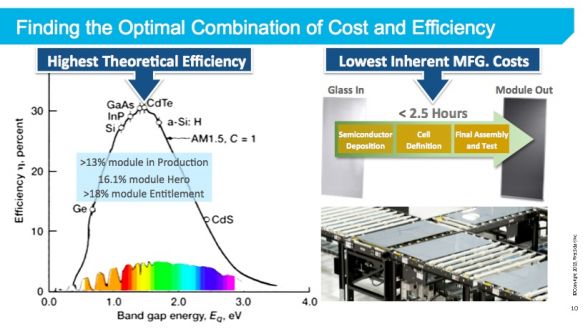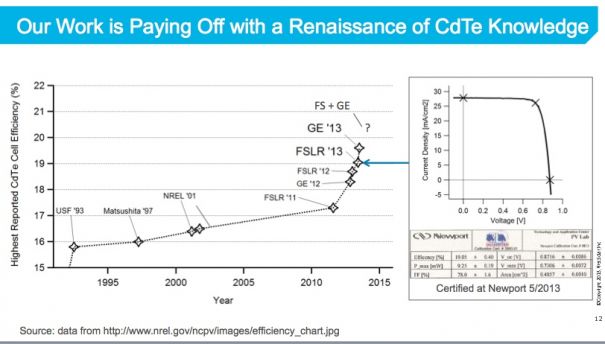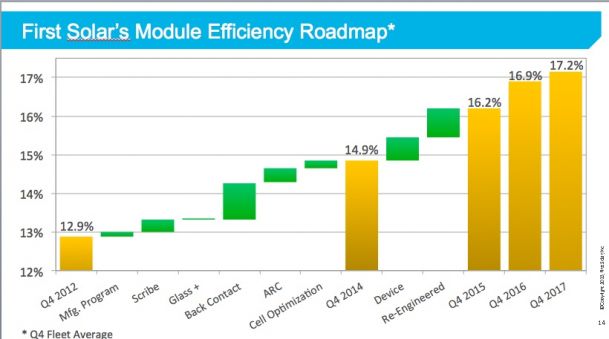Raffi Garabedian, the CTO of thin-film solar giant First Solar, spoke earlier this week at an IEEE Silicon Valley solar event. I'll report on the entirety of the talk (titled "CdTe and c-Si Under One Roof") next week, but wanted to share a few of the CTO's slides that focused on cadmium telluride efficiency performance roadmaps. Garabedian also addressed First Solar's recent acquisition of TetraSun, as well as the questions of when and whether high-efficiency technologies make sense for First Solar, but those issues will be addressed in another article that's coming soon.
Here's Garabedian on cadmium telluride's solar conversion efficiency:
"CdTe and GaAs: you can't get better than those two materials from a Shockley-Queisser limit perspective. It's perfectly matched to the solar spectrum. In fact, we can push the bandgap one way or another by adding a sprinkle of this or a sprinkle of that and get even more. The problem is cadtel is a polycrystalline material. It's messy, so there are a lot of losses. That's bad news, but it's also good news, because it means my team has a long way to go from a 13 percent module (which is kind of what we produce day-in and day-out today) to where I believe the entitlement is, which is over 18 percent module efficiency. By the way, we've made a 16.1 percent module, so we know how to do it. We just have some more work to do to get it into production."
He added, "The real advantage of cadtel is not efficiency -- it's cost."

Garabedian (after reminding us of public company disclosure disclaimers) said that "the bottom line is, by 2017, we'll be in the low-30 cents per watt range." That figure is on the lower end of the “Production Cost” (not inclusive of Cost of Sales) which First Solar announced on its Analyst Day earlier this year.
He added, "It's polycrystalline, so it's all about recombination losses at the end of the day for us. Everywhere on the device -- the front, back, and middle. We do spend a lot of time working on lifetimes, a lot of time working on passivation, on interfaces, and on bandgap engineering these days."
First Solar recently acquired GE's CdTe technology, allowing Garabedian to claim the current 19.6 percent cell record.

Garabedian said, "A 17 [percent] to 18 percent [efficient] module is within our reach with today's technology."




